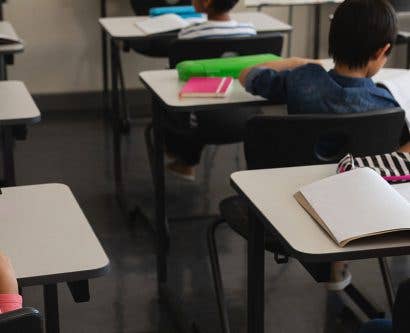Guidance on Safeguarding Looked After Children (LAC)
Each year, the government collects data about looked after children (LAC). In 2022, there were over 82,000 LAC in the UK. This number is rising year on year. It is important for those with safeguarding responsibilities to know how to support LAC to ensure the best possible outcomes for each child.
In this article, we will explain what is meant by the term LAC and the relevant legislation and guidance. We will also outline the role of the designated teacher in supporting LAC as well as discussing the additional safeguarding risks that they should be aware of.
What is a Looked After Child?
The term ‘looked after child’ refers to any child up to the age of 18 that has been in the care of their Local Authority for more than 24 hours. This includes children in the care system, such as those living in a children’s home, those in foster care and those living away from their parents. This can happen with agreement from the child’s parents or by court order.
The definition of a LAC under the Children Act 1989 is, any child that is provided accommodation by the Local Authority for more than 24 hours and/or is subject to a care order or a placement order from court.
Children enter the Local Authority’s care to ensure their safety and protection. There are many reasons why a child may need to be protected. For example, their parents or carers may be ill, have substance misuse issues, be maltreating them, unable to cope financially or the child may be an unaccompanied asylum-seeker. In the United Kingdom (UK), Local Authorities must support children that leave care at the age of 18 until they are at least 21 years old.
The definition of LAC varies slightly between nations in the UK and follows different legislation, policies and guidance. The main difference between the definition of a LAC in England and Scotland is that in Scotland children under a supervision requirement order are included. This means that some LAC will live at home, but have regular contact from social services.

Legislation and Guidance
There are various pieces of legislation in place to protect LAC. These vary slightly between England, Wales, Scotland and Northern Ireland. Here we will discuss the legislation in place in England, for information on other nations in the UK visit the government website here.
In England, the legislation and guidance relating to LAC includes:
- The Children and Young Persons Act 2008.
- The Children and Families Act 2014.
- Department of Education (DfE) guidance on care planning, placement and case review.
- DfE guidance on reducing criminalisation of looked after children and care leavers.
- DfE guidance on promoting the education of LAC and previously LAC.
- National Institute for Health and Care Excellence (NICE) guidance for LAC and young people.
The adverse events often experienced early in life by LAC can have a huge impact on their emotional and mental wellbeing. As a result, each child will have their own needs in order to live a fulfilled life. It is important that those with safeguarding responsibilities understand the additional duties they have for LAC to keep them safe, while meeting their specific needs.
Safeguarding Looked After Children

LAC are often at greater risk than other children their age, therefore require additional safeguards to keep them safe and protected.
As mentioned, being a looked after child can have an impact in different ways, including:
- Being at risk of bullying from peers.
- An increased risk of running away or going missing.
- An increased risk of being a victim of exploitation.
- Being more likely to have a mental health issue.
- An increased risk of substance abuse.
- Difficulty forming relationships and trusting people.
- Struggling with education.
LAC must be supported so they have the same opportunities as other children their age. This can help them to have a fulfilled childhood and enter adulthood successfully.
It is important to acknowledge the multitude of different backgrounds that LAC come from. Some LAC may be victims of child maltreatment, they may have moved in and out of care or between foster homes, they may have run away from home or care and they may show challenging behaviours due to their early experiences.
Research from the NSPCC identified five ways to improve LAC’s emotional and mental health. They are:
- Embedding an emphasis on emotional wellbeing throughout the system.
- Taking a proactive and preventative approach through thorough assessments of each child’s specific needs.
- Giving LAC a voice and the opportunity to make decisions about their own care and support.
- Supporting children’s relationships by being sensitive, understanding and resilient.
- Helping children identify and strengthen their support networks.

Supporting the Birth Family
In some instances, LAC can return to their birth family, therefore maintaining a positive relationship with them is crucial. If approved by court, LAC should be supported to stay in contact with their birth family if they want to and wherever possible, arrangements should be made to accommodate this.
The quality of a LAC’s relationship with their birth family can have a detrimental effect on their emotional and mental wellbeing, therefore it is important to prioritise their preference and decision regarding whether they maintain their relationship with their birth family.
Supporting those Leaving Care
When a looked after child turns 18 years old, they will leave care. However, they are entitled to support from the Local Authority until they are at least 21 years old. For some, transitioning from care to can be very challenging. But receiving the appropriate care and support can help them adjust to adulthood.
When LAC leave care, some will continue to live with their foster family, others will be provided with accommodation. Some LAC may be entering work full time, while others may be continuing their education. In the UK, LAC should be provided with a pathway plan that outlines their wishes and needs on leaving care, ensuring the individual has a suitable place to live will form part of this plan.
Looking to Learn More?
Our range of Safeguarding Courses will help you to understand your responsibility for safeguarding children. Our courses include Designated Safeguarding Lead training, as well as Introduction to Safeguarding Children and Advanced Safeguarding Children.
Role of the Designated Teacher for Child Protection
In maintained schools and academies, there must be a designated teacher for LAC. The role of the designated teacher is to support LAC to reach their full potential, whilst accommodating their specific needs. They do this by liaising with the Local Authority and the Virtual School Head to promote the LAC’s educational achievement. The designated teacher’s role also extends to children who have left the care system, this could be through adoption, guardianship or child arrangement orders.

Some responsibilities that the designated teacher for child protection has, include:
- Communicating with different agencies to ensure the child is cared for and supported, as well as having their needs communicated.
- Continual training and education around ways to support LAC.
- Awareness of the child’s age and preventing adultification wherever possible.
- Following guidance, policies and procedures to ensure the child is fully supported.
- Reporting any concerns to the designated safeguarding lead, escalating concerns when necessary.
- Listening to the child and their needs, being patient and understanding.
Each LAC will have a personal education plan, also referred to as a PEP. This will outline the child’s developmental and educational needs, so should be followed to ensure the child is supported appropriately. The PEP will also contain goals for the child, both long-term and short-term, to ensure they are on track to achieve their full potential and their progress is monitored. The designated teacher for child protection has a responsibility to make certain that the PEP is followed.
It is not possible to undo or change a LAC’s history, however with the appropriate care and support, LAC can overcome their earlier experiences and lead a fulfilled life.
The term ‘looked after child’ refers to any child that has been in the care of their Local Authority for more than 24 hours. There are additional safeguarding duties in place relating to LAC to ensure they are safe, protected and supported to achieve their full potential. In maintained schools and academies, a designated teacher for child protection is responsible for supporting LAC and following their personal education plan.
Further Resources:
- Safeguarding Courses
- How to Create an Effective Culture of Safeguarding in Schools
- Safeguarding Children Legislation: Guidance for Schools
- What is Professional Curiosity in Safeguarding?
- Safeguarding Flowchart: Procedure for Reporting Concerns
- Safeguarding Scenarios and Answers for Education











